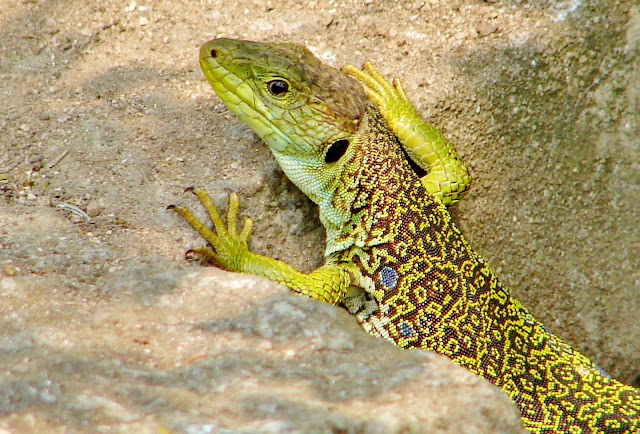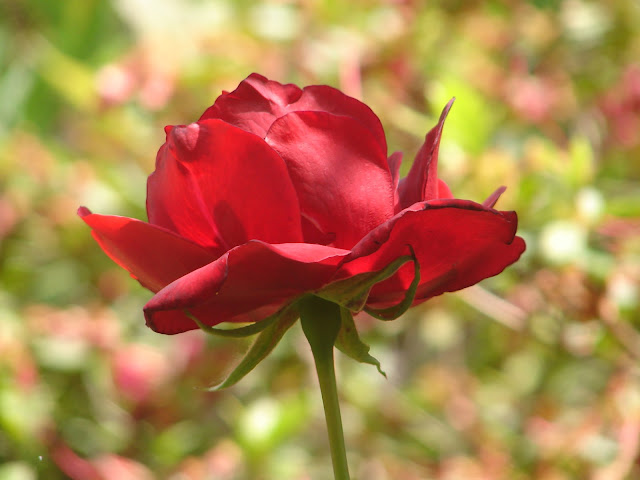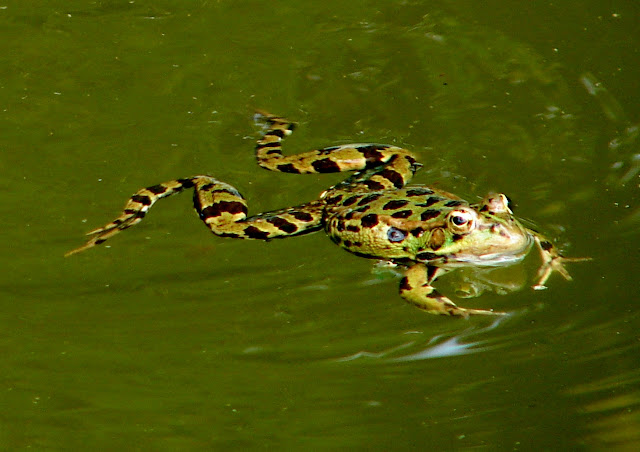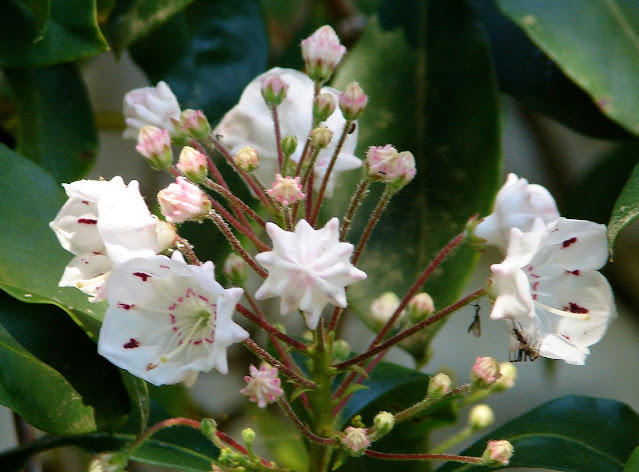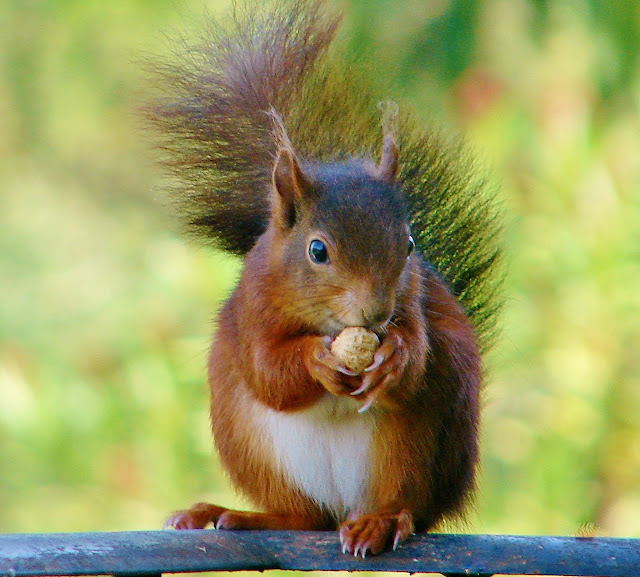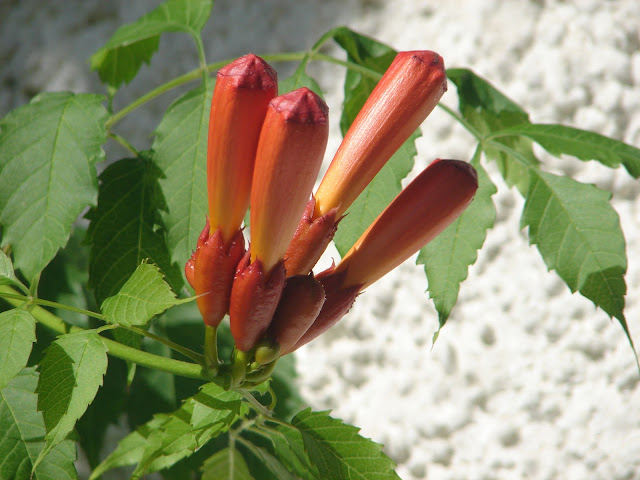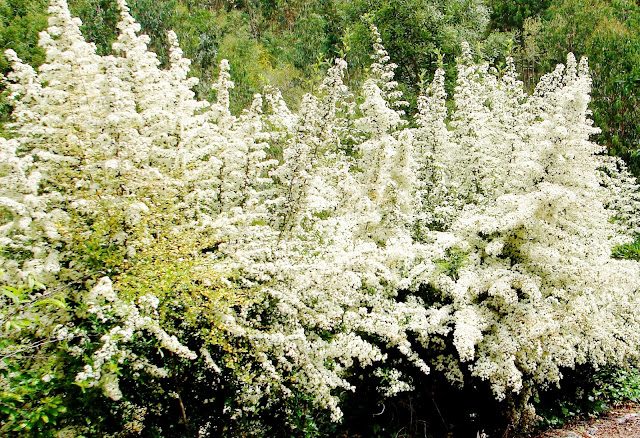Hello everyone, I'm back from my long break, and want to thank each and everyone of you for the lovely comments you left on my last post. Pedro is still here and I am enjoying the time we spend together and our birthdays with the rest of the family were celebrated with much gaiety and enthusiasm. We didn't do anything special on other occasions, only a few outings, but it never matters to either of us, as we always have so much to talk about that each day is new and interesting. In the mornings whilst Pedro works and it 's cooler outside, I do my chores and take photos around the garden, and here are a few I managed to capture.
I was sitting in the shade on a low stone wall which surrounds the garden catching my breath after a visit to the orchard to collect a few oranges, when I heard a rustling noise to my right and saw a large Occelated lizard just a few feet away. emerging from it's underground hibernating place. It saw me, and stopped moving, but I knew that if I kept perfectly still, it would eventually scurry away in reptile fashion, as hunger is a great incentive. Only the day before I had seen two large lizards hunting in the front garden.


